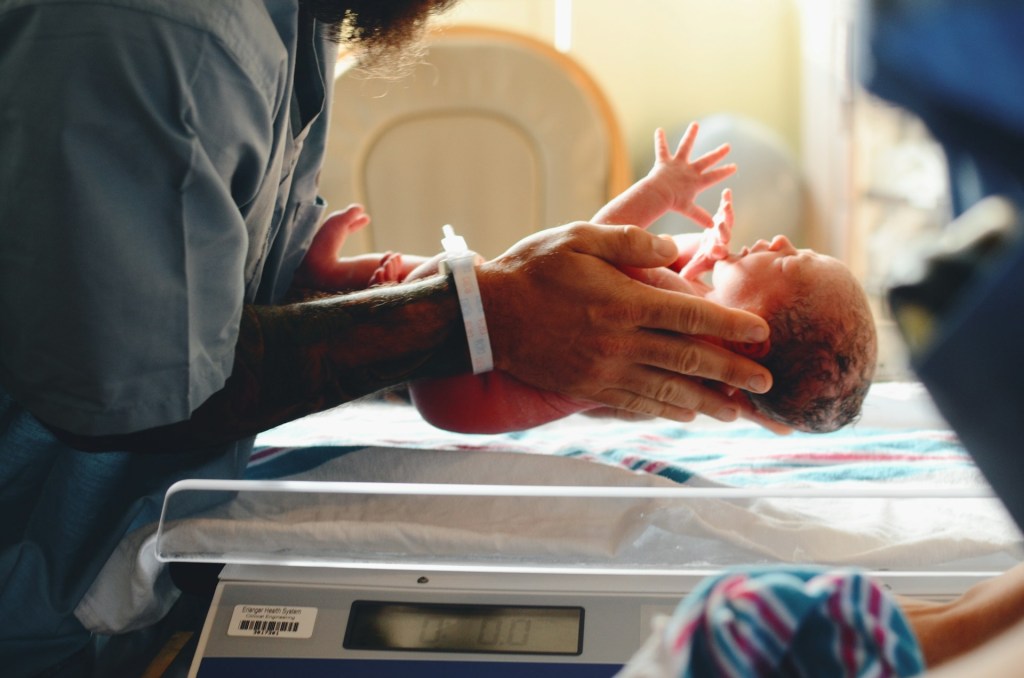
There is so much happening in those first minutes after giving birth — besides the fact mothers are trying to process they now have a whole human to take home and raise. Your little one will be given the once-over from top to tail in the moments after they are born, and one test your bundle has to take fresh out of the womb is to get their Apgar score. It might sound a bit weird, but it’s quick and painless, and for most babies, takes just a few moments to pass.
Not that you don’t have enough to worry about as new parents, but it’s less scary when you know what’s coming. Know every part of the Apgar score to feel more relaxed about your little one taking it.

The Apgar test basics
Why do fresh babies even need this test?
Well, it’s a pretty important test. Even if your baby has been swimming around just fine in your belly submarine, once your child makes their debut on the non-liquid side of things, they are checked to see how they adjust. It’s a big transition for anyone to go from living in a sac with fluids to breathing air, so the professionals need to make sure every baby gets through it OK.
How often your baby will take the Apgar test
Not only is this test simple and fast, but your babe should only have to take it twice. The nurse will perform the test within one minute of birth, and most parents don’t notice it because they are amazed at this new creature they are staring at. The test is given again at five minutes old.
Babies get scored on five things
- Appearance
- Pulse
- Grimace
- Activity
- Respiration
Your little one will be checked on their appearance, as in what color their skin is, their heart rate, basic reflexes, muscle tone, and their breathing.
The range for the points
Each section has three possible outcomes, where each is assigned a point value of 0, 1, or 2. We know we are all bad at math, but that means the value range a baby could score is between 0 and 10.
A 0 for each would be blue skin color, no pulse, no reaction to anything, no crying, and no breathing. To get 1 point for each, there would be pink but still some blue color to the skin, heartbeat under 100 beats per minute, frowning but not crying, little movement, and little crying. For 2 points each, they would look like an all-pink body with no blue, more than 100 beats per minute, coughing, sneezing, or crying, lots of leg and arm movement, and those strong, healthy cries that let everyone know those lungs work.
A score to shoot for
Though normally scoring babies isn’t a nice thing to do, when it comes to the Apgar test, it’s necessary. A score of 7 is the lowest you want to see. Now, we all want our babies to be nothing short of perfect, but with this test, that will be nearly impossible. Almost all babies come out with some part of them not quite pink yet, with either the feet or hands — or both — being blue right at birth.
Getting a 10 for that first check probably won’t happen, so if your baby scores between a 7 and a 9, things are looking good. The second test is where babies could score a 10, but it’s still fine if your baby scores between a 7 and a 9.

In case your baby doesn’t get the score you want to see
If a baby hits a score of 7 both times, they might be tested again every five minutes until nurses like what they see or think the baby might need extra attention. If a baby hits in the 4 to 7 range both times, there could be a need for medical help or additional monitoring, and if they score lower, more immediate care would be required.
A lower score doesn’t mean the worst
If you had any kind of complicated delivery with your baby, the baby was premature, or was born via C-section, these could all result in lower Apgar scores that would be normal for those types of births. The important thing is a baby improves while outside the womb.
Also, keep in mind if you had an epidural, any unexpected trauma, lower or higher birth weight, or there were any congenital malformations, these all could result in a lower score that doesn’t mean a baby would need intervention. One nurse might score a 2 for a baby, another might score a 1, or your nurse might only go by the combined score.
Know that the Apgar score doesn’t have anything to do with long-term health
Whatever score a baby receives, it’s not related to what kind of health they will have as they grow. It doesn’t indicate a long and healthy life, and it won’t determine if the baby has medical issues later. The Apgar test and resulting score are solely for how baby transitions out of the womb.
With that bundle of love snuggled up on your chest, no one will even realize it’s being done the first time. No matter what a baby scores, there are professionals there to help them get a better score the next time, and remember, the Apgar test has nothing to do with a baby’s overall health as they grow up.
Think of it more like their first check-up than a test, and take that pressure off you and baby. The Apgar test might have a funny-sounding name, but it’s needed to make sure a baby figures out how to go from a sea creature to a land lover without any problems.



